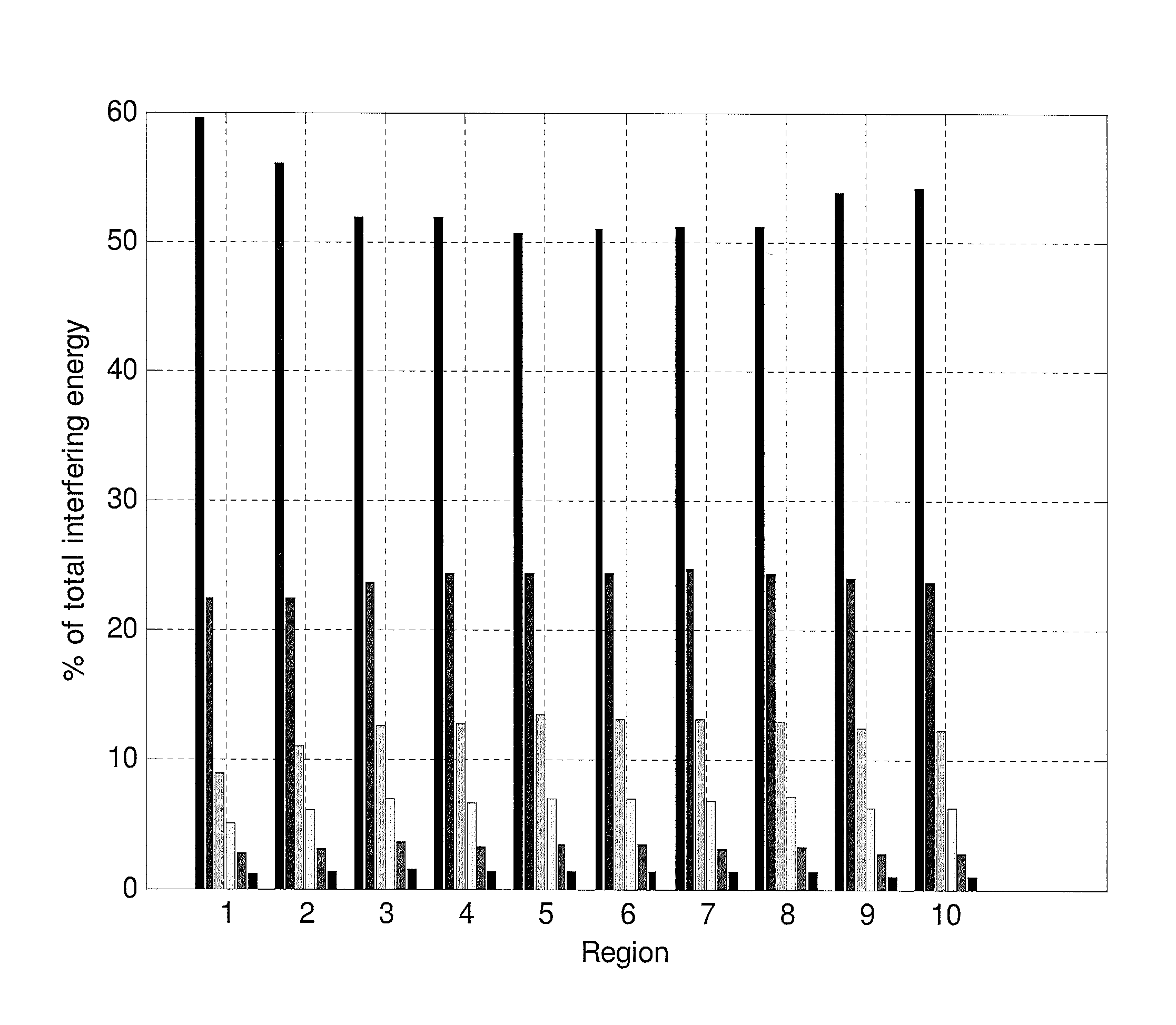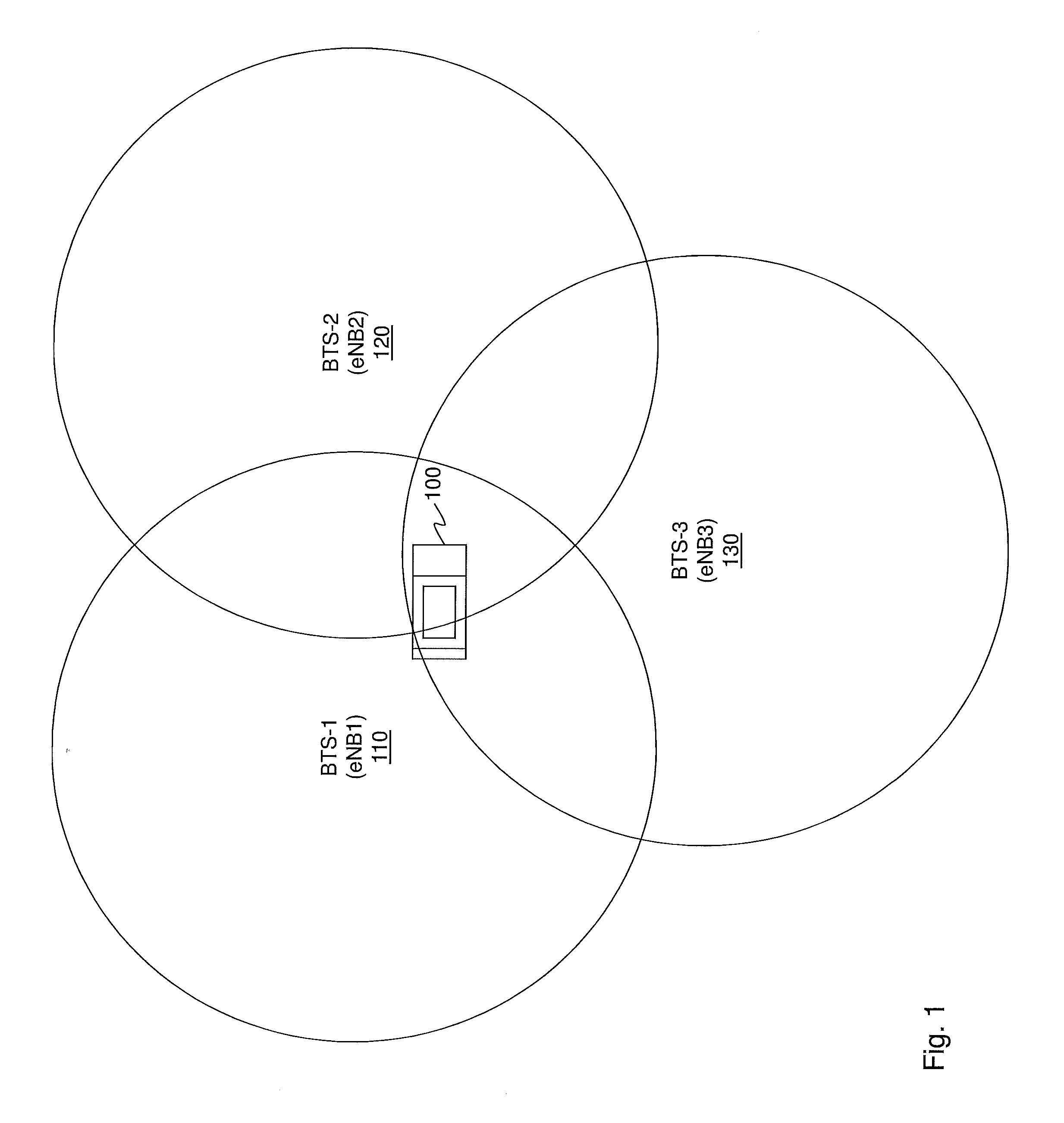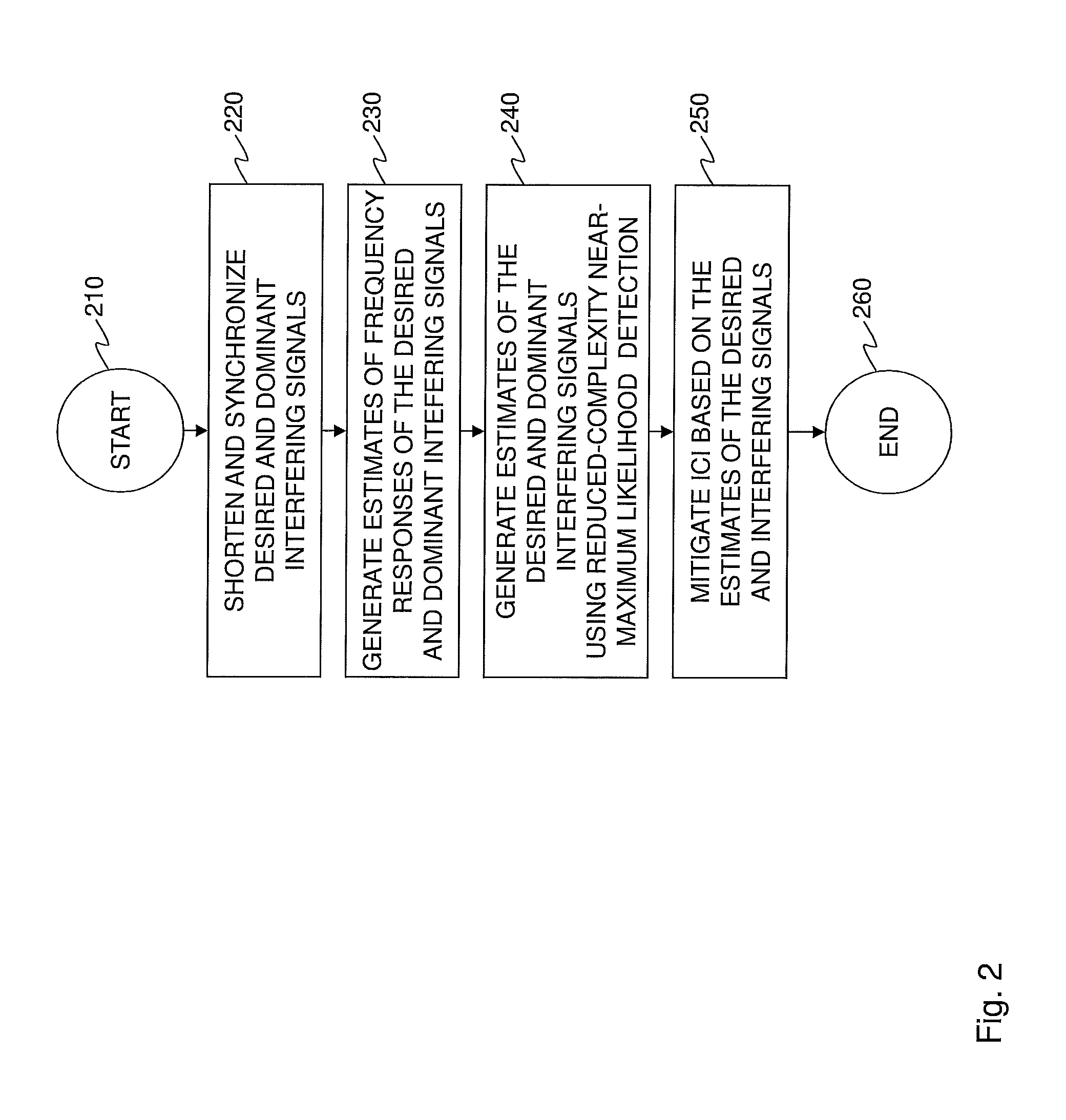Intra-cell and inter-cell interference mitigation methods for orthogonal frequency-division multiple access cellular networks
a technology of orthogonal frequency division and multiple access, applied in the field of cell networks, can solve problems such as affecting signal-to-interference ratio, reducing data rates, and intra-cell interference and ici from adjacent cells, especially small cells, to achieve the effect of limiting impairment, reducing data rate, and reducing data ra
- Summary
- Abstract
- Description
- Claims
- Application Information
AI Technical Summary
Benefits of technology
Problems solved by technology
Method used
Image
Examples
first embodiment
[0072] ML detection is performed on the desired signal, and linear zero-force (ZF) detection is performed on the two most dominant interfering signals, as described mathematically below.[0073](i) For each of the M1,k choices,
[X^2(k)X^3(k)]=dec(H2,3-1(Y(k)-H1(k)X1(k)))(16)
is computed, where
H1(k)=def[H1,1(k)H2,1(k)],H2,3(k)=def[H1,2(k)H1,3(k)H2,2(k)H2,3(k)]
and dec(.) denotes the decision device (i.e., slicer) for a size M2,k and M3,k signal constellations corresponding to X2(k) and X3(k), respectively.[0074](ii) From the M1,k combinations of the triplet (X1(k),{circumflex over (X)}2(k),{circumflex over (X)}3(k)) computed in the previous step, the one that minimizes the following Euclidean distance metric:
∥Y(k)−H(k)X(k)∥2 (17)[0075]is chosen.[0076](iii) In presence of Nint (Nint>2) dominant interfering eNBs in the system, an ML search is performed on (Nint−1) eNBs' signal constellations (one desired, (Nint−2) interfering), and the estimate of the two interfering signals is computed ac...
second embodiment
[0078] joint ML detection is performed on the desired signal and only one of the dominant interfering signals (e.g., the one with the smaller signal constellation size to reduce the ML search complexity). Then maximal-ratio combining (MRC) detection is employed on the other dominant interfering signal, as described mathematically below:[0079](i) For all of the M1,k M2,k choices in the ML search,
X^3(k)=dec(H3(k)H(Y(k)-H1,2(k)[X1(k)X2(k)])H3(k)HH3(k))(18)
is computed, where
H3(k)=def[H3,1(k)H3,2(k)],H1,2(k)=def[H1,1(k)H1,2(k)H2,1(k)H2,2(k)],
and dec(.) denotes the decision device for a size M3,k signal constellation corresponding to X3(k).[0080](ii) From the M1,k M2,k possible choices of the triplet (X1(k),{circumflex over (X)}2(k),{circumflex over (X)}?(k)) computed in the previous step, the one which minimizes the Euclidean distance metric:
∥Y(k)−H(k)X(k)∥2 (19)[0081]is chosen.[0082](iii) In the presence of Nint (Nint>2) dominant interfering eNBs in the system, an ML search is performe...
third embodiment
[0117]FIG. 10 is a flow diagram of an ICI mitigation method for OFDMA cellular networks operating in a spatial diversity mode with multiple transmit and receive antennas. The method begins in a start step 1010. In a step 920, the desired and dominant interfering signals are shortened and synchronized. In a step 1030, CFR coefficients are computed for the desired and dominant interfering signals. In a step 1040, possible combinations of the desired signals are generated. In a step 1050, for each combination of the desired signal, estimates of the dominant interfering signals are generated using a linear filter. In a step 1060, ICI is mitigated based on the possible combinations and estimates of the desired and dominant interfering signals. The method ends in an end step 1070.
[0118]Hybrid MIMO RC-NMLD Embodiment
[0119]RC-NMLD can also be directly applied to hybrid MIMO scenarios where not all of the desired and interfering eNB signals use the same MIMO transmission mode. For example, t...
PUM
 Login to View More
Login to View More Abstract
Description
Claims
Application Information
 Login to View More
Login to View More - R&D
- Intellectual Property
- Life Sciences
- Materials
- Tech Scout
- Unparalleled Data Quality
- Higher Quality Content
- 60% Fewer Hallucinations
Browse by: Latest US Patents, China's latest patents, Technical Efficacy Thesaurus, Application Domain, Technology Topic, Popular Technical Reports.
© 2025 PatSnap. All rights reserved.Legal|Privacy policy|Modern Slavery Act Transparency Statement|Sitemap|About US| Contact US: help@patsnap.com



